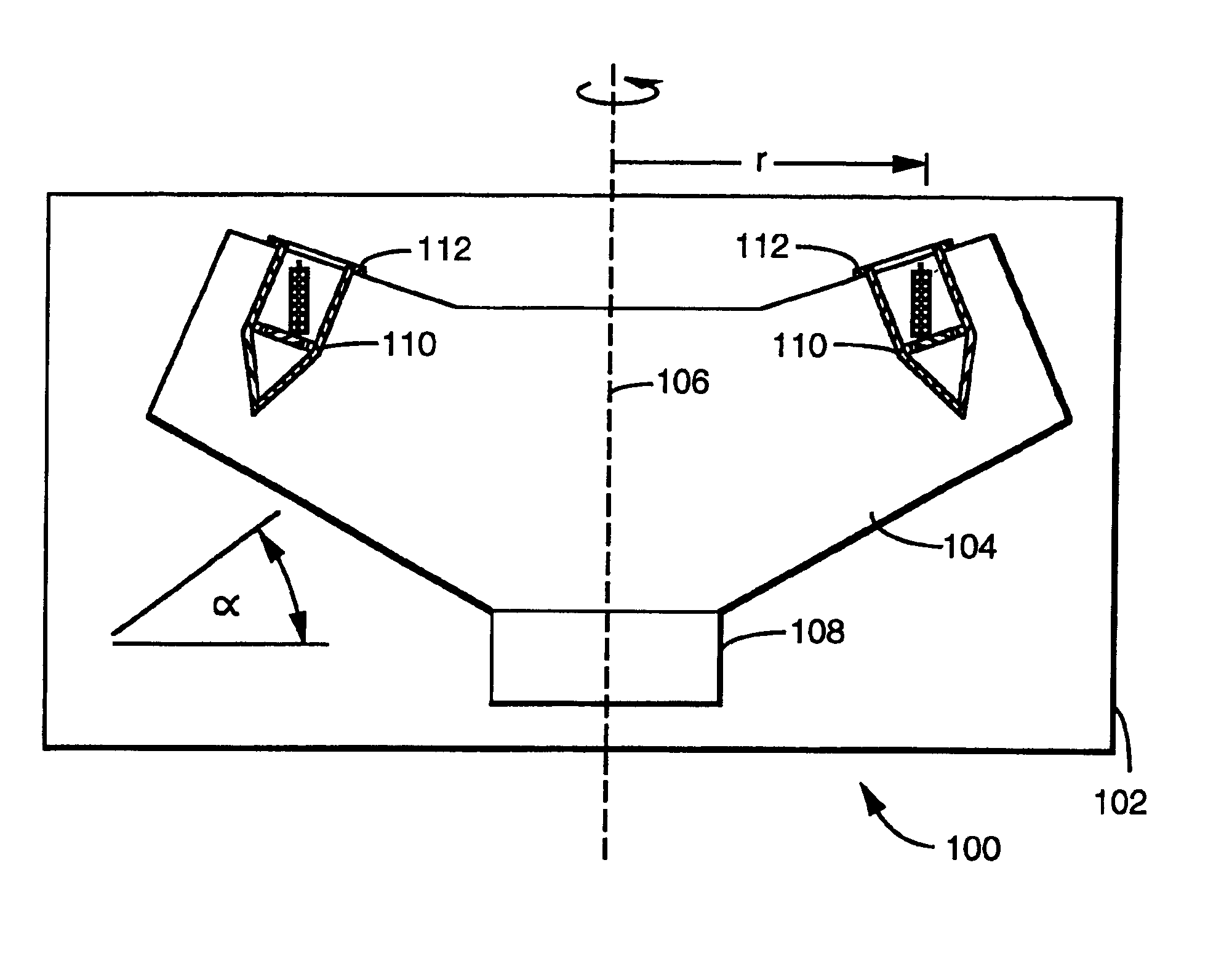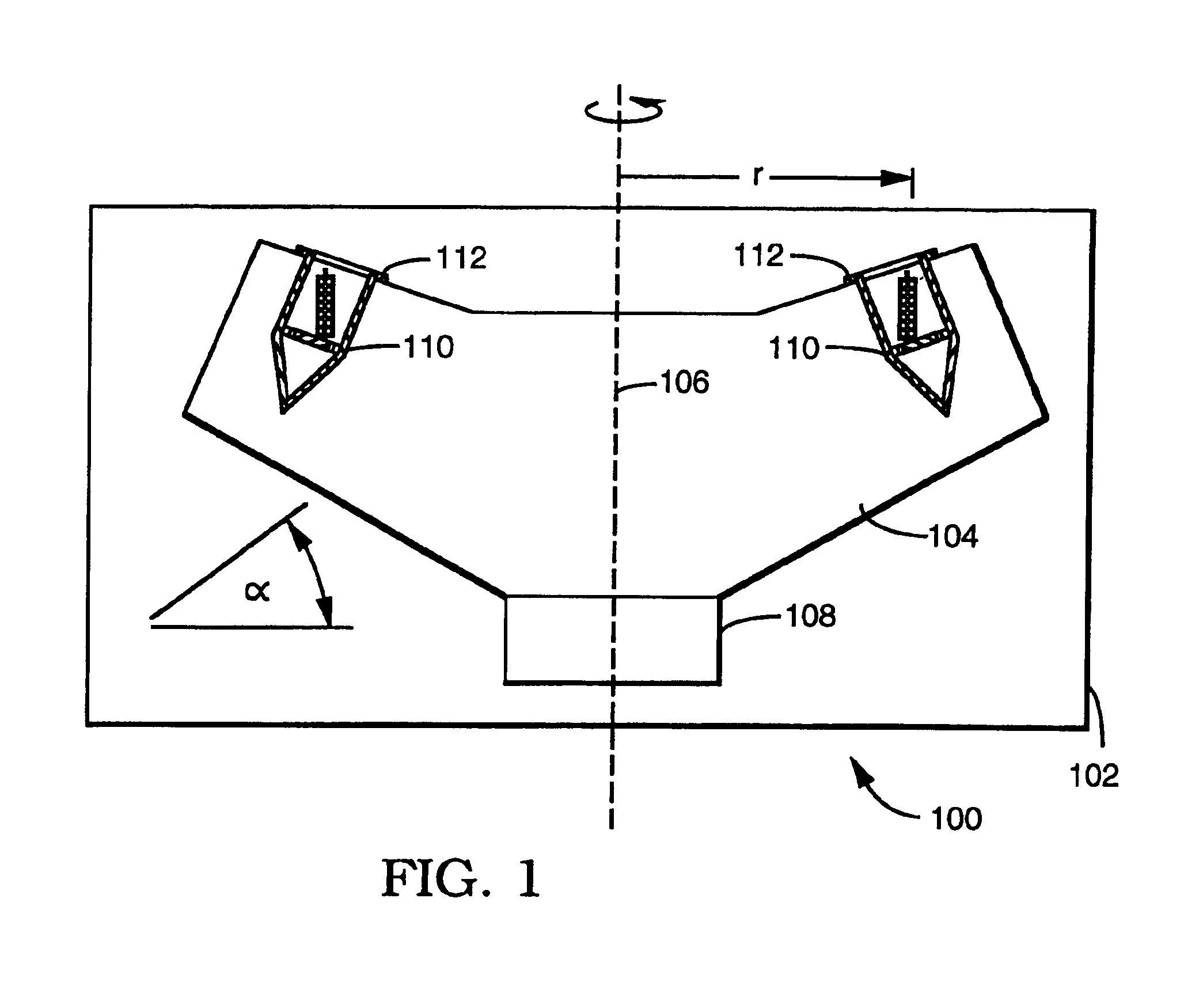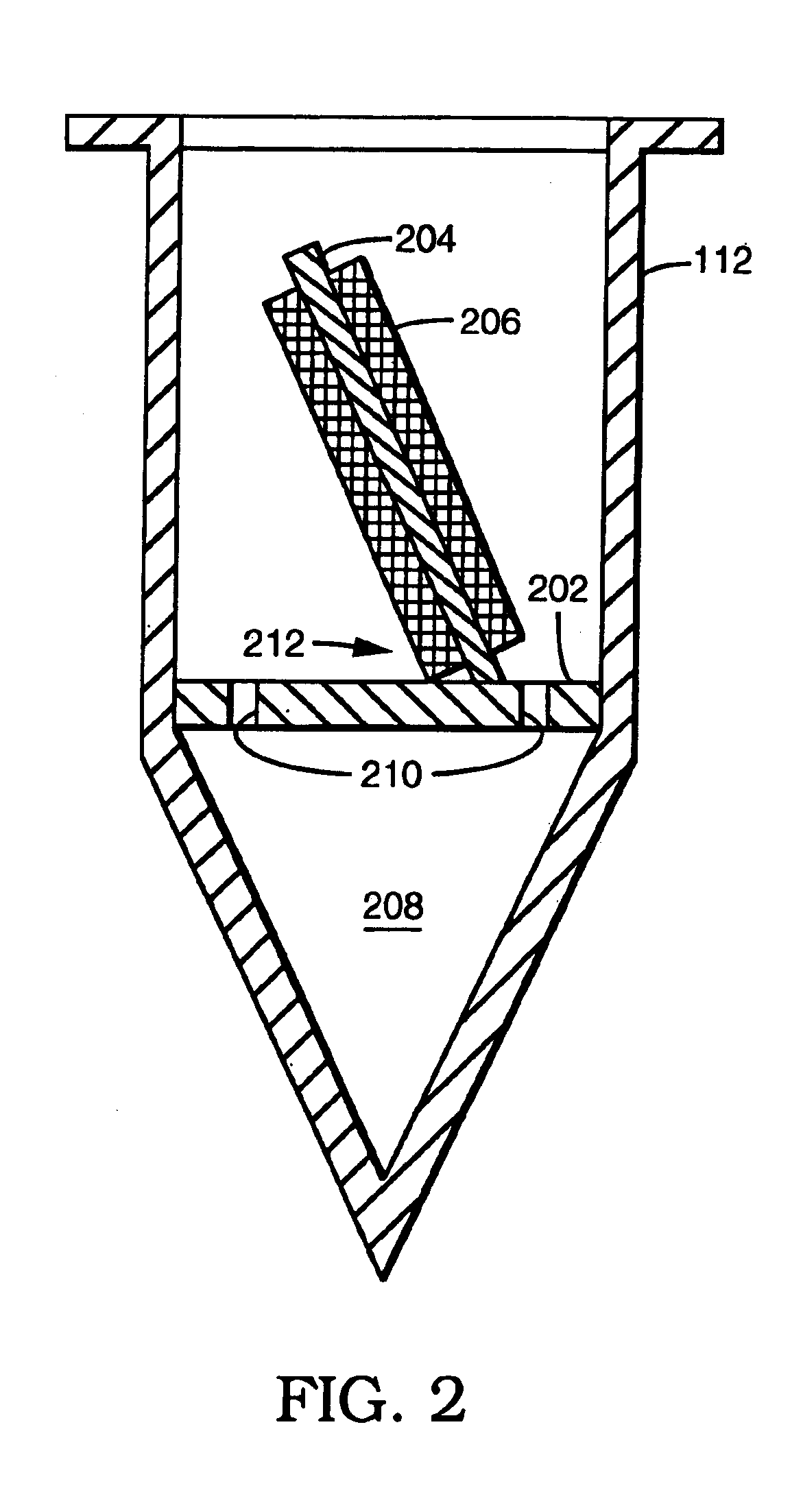System for the process of coating implantable medical devices
- Summary
- Abstract
- Description
- Claims
- Application Information
AI Technical Summary
Benefits of technology
Problems solved by technology
Method used
Image
Examples
example
In one example, fifteen 13 mm ACS Multi-Link Duet® stainless steel stents, produced by the Guidant Corp. of Indianapolis, Ind., are immersed (e.g., for a few seconds or up 20 seconds or more) in a coating substance including ethylene vinyl alcohol copolymer (commonly known by the generic name EVOH or by the trade name EVAL) and dimethyl sulfoxide (“DMSO”) solvent, in a 1:4 ratio. Tetrahydrofuran (THF) may be included in the DMSO. The THF lowers the viscosity of the coating substance and increases wetting on the surface of stent 206. Each of the fifteen stents is then immediately mounted into a centrifuge container 112, as described above with respect to FIGS. 1-3. The fifteen centrifuge containers 112 are inserted into chambers 110, and centrifuge containers 112 are rotated for 60 seconds at 6,500 RPM.
The stents are then removed from centrifuge containers 112, placed on mandrels, and loaded into a Blue M model vacuum convection oven from the Blue M Electric company of Watertown, Wis...
PUM
| Property | Measurement | Unit |
|---|---|---|
| Angle | aaaaa | aaaaa |
| Distance | aaaaa | aaaaa |
Abstract
Description
Claims
Application Information
 Login to View More
Login to View More - R&D
- Intellectual Property
- Life Sciences
- Materials
- Tech Scout
- Unparalleled Data Quality
- Higher Quality Content
- 60% Fewer Hallucinations
Browse by: Latest US Patents, China's latest patents, Technical Efficacy Thesaurus, Application Domain, Technology Topic, Popular Technical Reports.
© 2025 PatSnap. All rights reserved.Legal|Privacy policy|Modern Slavery Act Transparency Statement|Sitemap|About US| Contact US: help@patsnap.com



